Today, April 4, marks World Rat Day. In this blog post, CHM curator of religion and community history Rebekah Coffman writes about the rat-shaped hole in Chicago’s Roscoe Village neighborhood, rats in religion, and how the secular comes hand in hand with the sacred.
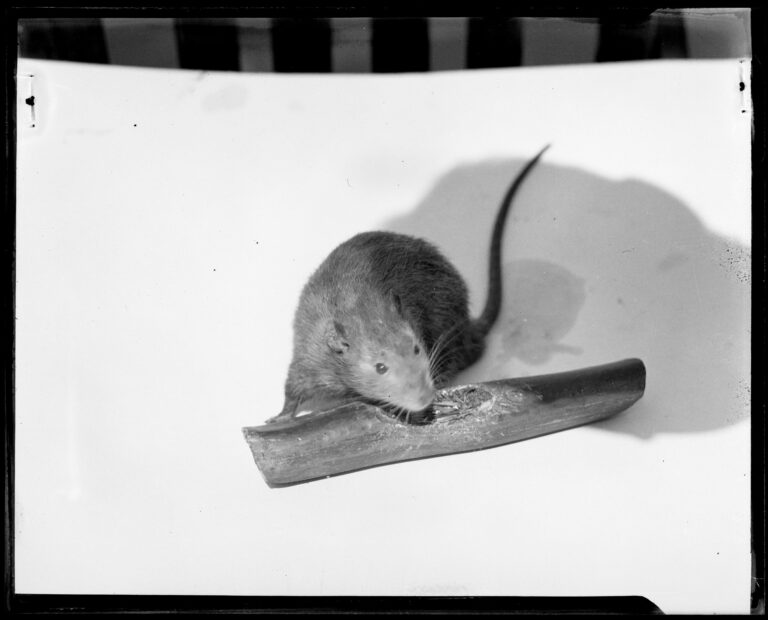
Pest Control, Rat Gnawing Cable, May 5, 1922. CHM, ICHi-164646
Having earned the title “rattiest city” in the United States for the ninth year in a row, rats hold a special place in Chicagoans’ hearts and urban lore. While some debate if Chicago indeed has the most rats per capita in the country (we’re looking at you New York), it seems to be widely accepted that Chicago reigns supreme in rat obsession if not in actual numbers.
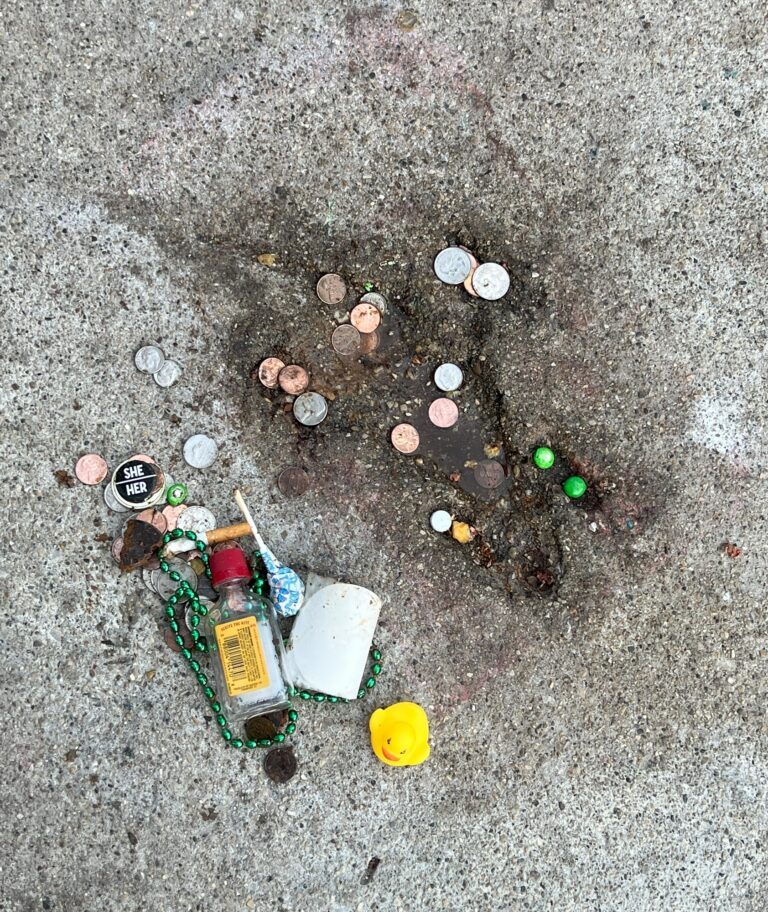
Chicago Rat Hole, 2024. Photograph by Rebekah Coffman
Chicago’s love affair with the rat has recently found a resurgence with the rediscovery of a concretized imprint of a furry rodent in a sidewalk in Roscoe Village. Now known, belovedly or bemoaningly, as the Chicago Rat Hole, it probably needs no further introduction, but I’ll briefly recap its known history just in case.
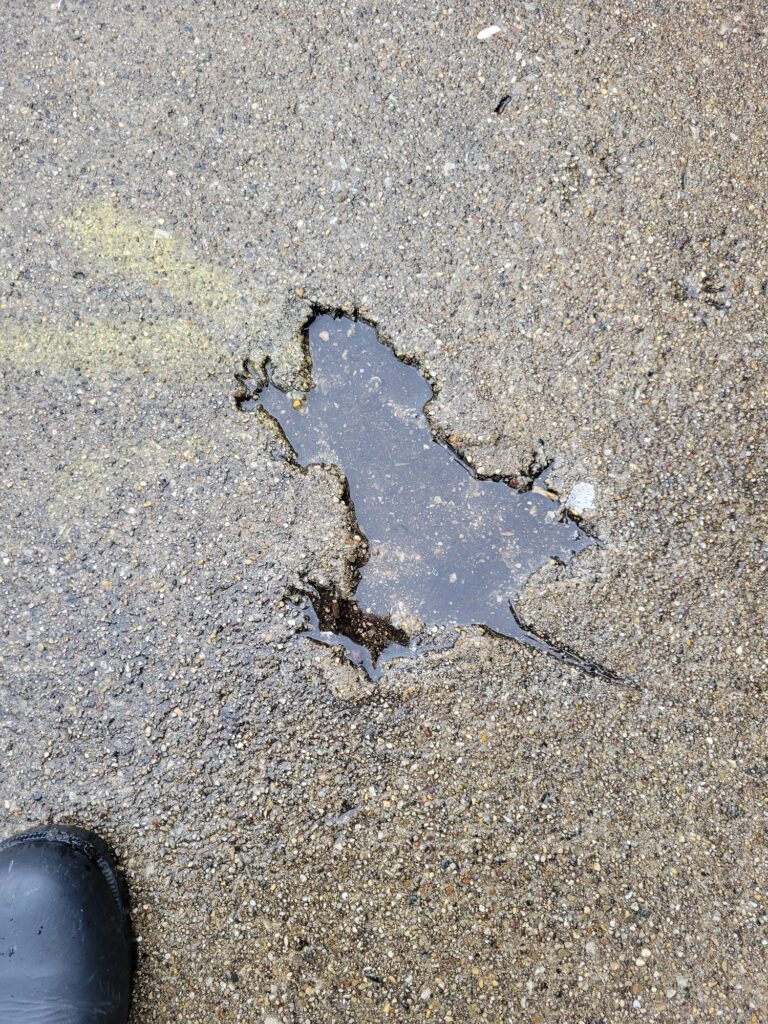
Original photograph of the Chicago Rat Hole from Winslow Dumaine’s tweet, 2024. Wikimedia Commons
Residents of Roscoe Village claim the imprint of Chicago’s furry frenemy has been in the sidewalk for decades, mysteriously appearing after fresh sidewalks were poured. It was not until January 2024 that it would reach viral status based on a quick-witted tweet, resulting in an onslaught of visitors. This quickly snowballed into visitors (some would call pilgrims) leaving objects (some would call offerings) by the hole, resulting in a happenstance shrine. There have been pilgrimages, proposals, and even a wedding all held in the presence of Chicago’s latest tourist trend, sometimes to the great chagrin of its neighbors. Despite multiple attempts to fill it back in, it miraculously remains.
As curator of religion and community history, my role looks at the ways in which Chicago has been shaped by its innumerable religious communities, expressions, and places. Sacredness and belief are found and conceptualized in diverse and unexpected ways, and religion has often spontaneously appropriated spaces around the city, including through things not traditionally considered “religion.” This line of thinking brought my colleagues and me to ask ourselves the question: Is the Chicago Rat Hole just silly, completely sacrilegious, or something uniquely sacred to Chicago?
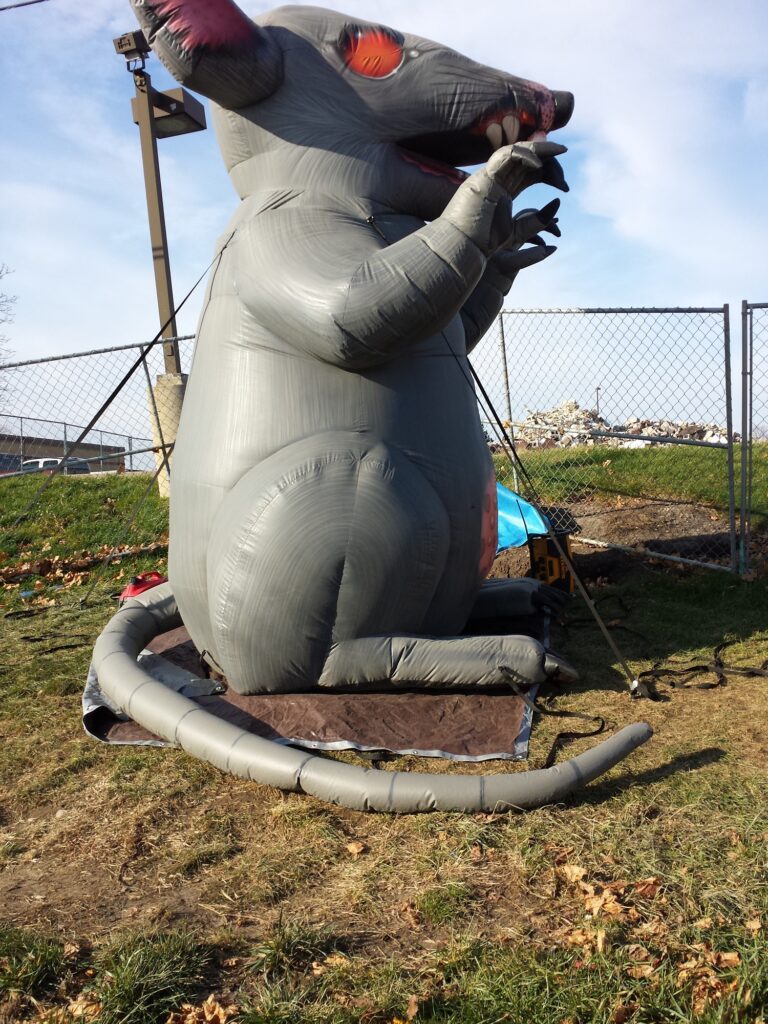
Inflatable rat in Bloomington, Illinois. Photo by Aklibbee, Wikimedia Commons
To begin, let’s take a quick stroll through rats’ known associations. Rats as creatures are reputationally mixed. On the one hand, they are intimately associated with illness, disease, and destruction, making them a verifiable pest. Their image can be negatively conflated with conniving behavior, as in the Pied Piper of Hamlin, or with picket line crossing, as with Chicago’s own “Scabby the Rat,” an inflatable rat used to bring attention to labor issues.
On the other hand, rats are positively recognized for their tenacity, quick wit, and impeccable senses of taste and smell. According to the City of Chicago, these incredible creatures are exceptional at climbing and swimming, can chew through hard materials like wood and plaster, can tread water for up to three days, and can survive a five-story fall unharmed.
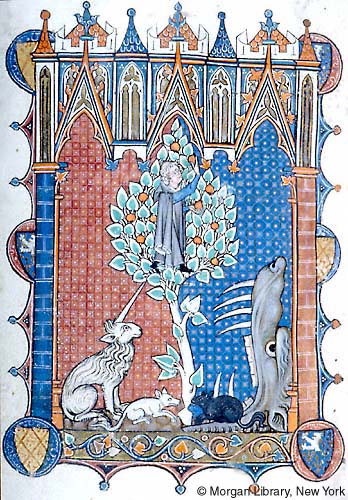
Page from the Psalter–Hours of Yolande de Soissons (1280–99) showing two rats gnawing on the trunk of the Tree of Life. MS M.729, Morgan Library and Museum Collection
This dual-sided nature also translates into religious depictions and theological understandings of rats. In Christian traditions, rats may be depicted as symbolically tied to evil and sin, sometimes depicted near Judas, the betrayer of Jesus in the Books of the Gospel, or shown in moments of destruction, as in the psalter image above.

A woman in a traditional Chinese garment stands with a year of the rat sign celebrating the Chinese New Year, Chicago, January 17, 1972. ST-19033122-0006, Chicago Sun-Times collection, CHM
In other traditions, rats are centered for their positive attributes. For example, the Chinese zodiac places the rat at the start of the twelve-year cycle, associating it with traits of intelligence, perseverance, and optimism.
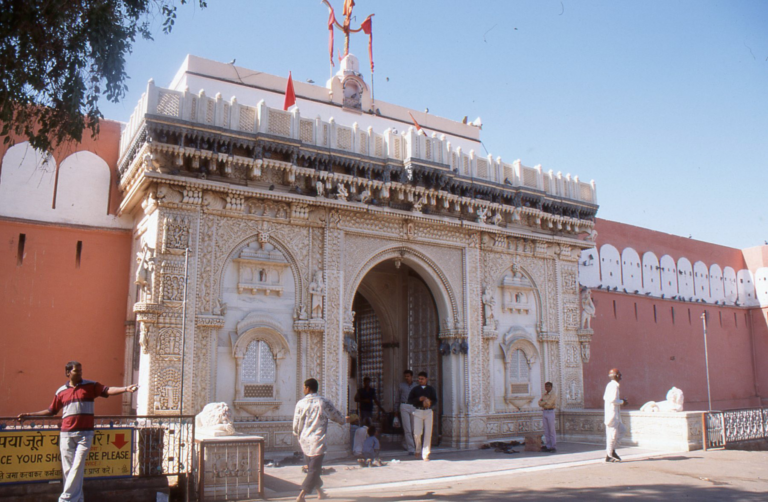
Above: Karni Mata Temple and below: rats drinking at the Karni Mata Temple, 2016. Photographs by Günther Jontes, Wikimedia Commons
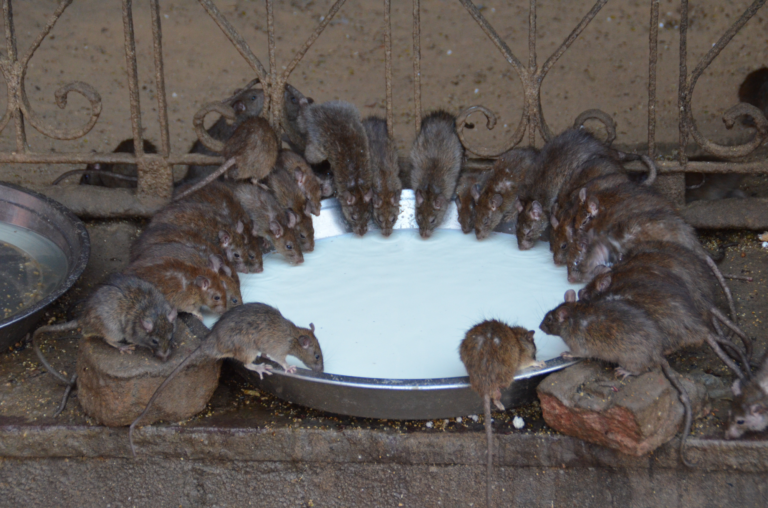
In Deshnoke, Rajasthan, India, the Karni Mata Temple or Madh Deshnoke celebrates the Hindu goddess Karni Mata who chose kābā (rats) as a symbol of power. The temple cares for thousands of rats, including providing prasad (food offerings), as the kābā are considered holy.
This handful of examples show us that the place of the rat in religion may be conflicting, but there are established iconographies, associations, and spiritual roles. The rat is justifiably religious in real and respectful contexts. But, does this necessarily translate to the comedic irony, touristy kitsch, or public nuisance that is the Chicago Rat Hole?
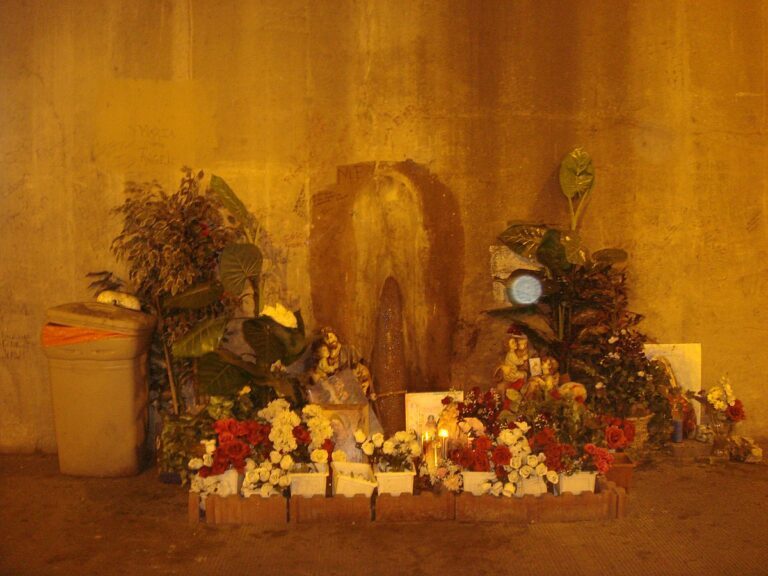
Our Lady of the Underpass (aka Salt Stain Mary), 2007. Photograph by Daniel X. O’Neil. Wikimedia Commons
The rat hole would not be the first time a happenstance shrine has resulted in a debate about material religion in Chicago. Our Lady of the Underpass, which first appeared in 2005 along Fullerton Avenue beneath the Kennedy Expressway, to some was merely a salt stain and to others became an undeniable revelation of la Virgen de Guadalupe. Catholic tradition, in fact, includes a long heritage of recognizing Marian apparitions, meaning sightings of the Virgin Mary in everyday settings and among ordinary objects. Apparitions may go through a process by which church leadership approves a given encounter as a true revelation. However, countless examples persist of someone seeing or interacting with an image of Mary, Jesus, or other religious figures that falls outside traditional parameters but remains important to believers on a spiritual level or as a secular cultural icon. In many cases, it’s a blurring of the two.
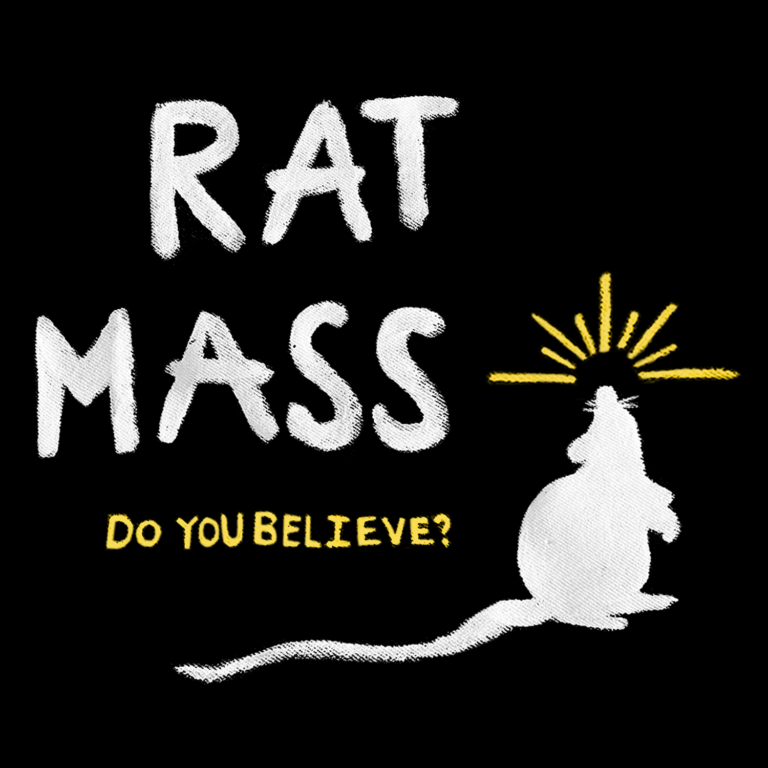
Logo for Rat Mass. Courtesy of Rat Mass.
To further explore this mixing of the spiritual with the everyday, I reached out to local rat religion experts Perry Letourneau and Joseph Bryant, makers of “ratology” and hosts of Rat Mass. Rat Mass was born in January 2023 from Joseph and Perry’s searches for meaningful community and shared interests in comedy. Through monthly performances at the Annoyance Theater in Lakeview, Rat Mass incorporates recognizably religious elements— hymns, sermons, communion, baptism—but all redefined through the lens of a Chicago rat.
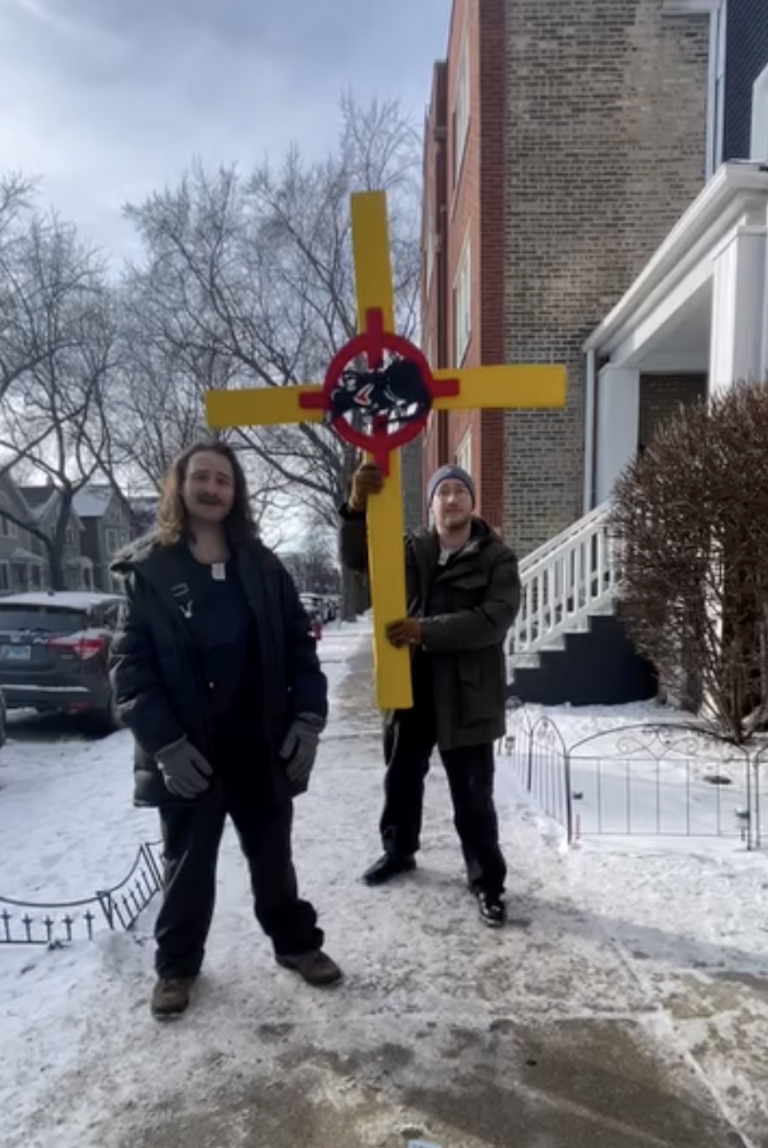
Church of Ratology at the Chicago Rat Hole, 2024. Courtesy of Rat Mass.
In January 2024, at the peak of rat hole popularity, they claimed holy stewardship as the Church of Ratology. However, the rat hole was not inherently on the radar for Letourneau and Bryant when they began. The choice of the rat came from a desire to distance themselves from religious practices they had found harmful, and they searched for an animalistic representation of qualities they both admired. For them, rats are noble and adaptable with an innate ability to survive and thrive in the harshest of conditions. Additionally, because there are so many rats in the city, their presence creates a shared point of connection for Chicagoans. It’s an everyday experience that becomes a part of Chicago living, and Rat Mass’s sold-out shows suggest that experience has a real draw.
A comedy performance that parodies religion may not seem inherently like the answer for separating the sacrilegious from the sacred. However, in America’s shifting religious climate, it does reveal something very real. Religious expression is changing, but the need to find meaning and create community remains. Letourneau and Bryant asserted that while Rat Mass is a comedy performance, it is a real community gathering centered on traits they genuinely admire and to which they aspire. They see traditional religious services also as a mixture of the performative with the metaphysical as the meaning is formed by those who participate, and ratology is simply their expression.
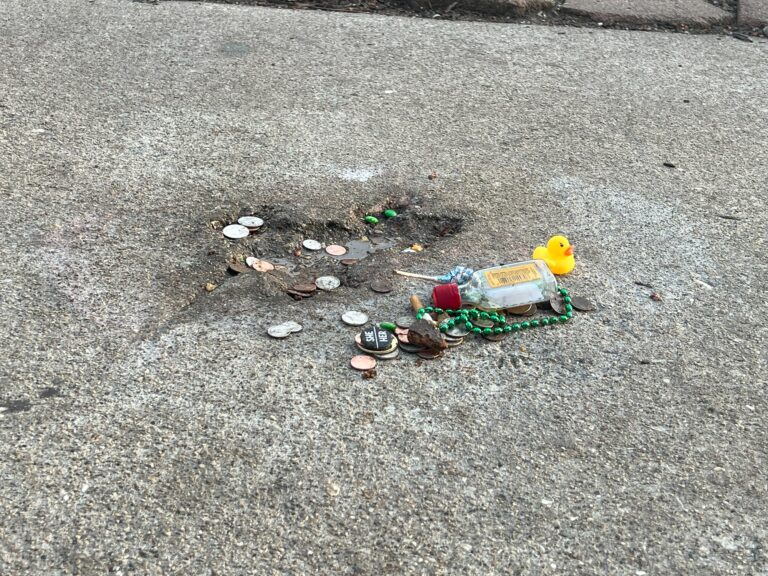
Chicago Rat Hole, 2024. Photograph by Rebekah Coffman
So, what does this mean for Chicago’s beloved rat hole? Scholars David Morgan and Sally M. Promey affirm the role an image plays in both forming memory and creating ritual in public religious expression. Images become an important way of marking group identity and creating a sense of belonging. In this case, the meaning centers on the image of the humble Chicago rat. For numerous Chicagoans, it has led to ways of coming together: performances, community gatherings, life events, general jokes, and serious conversations. It reminds us that the secular comes hand in hand with the sacred. Tourists can also be pilgrims. Kitsch may also be reverence. The Chicago Rat Hole can be simultaneously silly, sacrilege, and genuinely sacred.